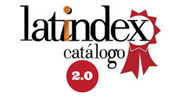Cualidades de candidatos que optan a un puesto de trabajo: una evaluación mediante análisis de correspondencias
DOI:
https://doi.org/10.61395/victec.v5i8.130Keywords:
training, correspondence analysis, qualities, selectionAbstract
The work environment is increasingly competitive and dynamic, this makes skills crucial in a job candidate. However, the qualities and their various characteristics influence the selection profile. The purpose of this article is to provide an illustration of using correspondence analysis to present a visual and easily understandable view of comparative characteristics in profiles. The document aims to contextualize the importance and skills that require a candidate for a job; and second, to illustrate their relative positioning among specific attributes that contribute significantly across a wide variety of job roles. The approach consists of using correspondence analysis (n=105) and constructing a graph in which two dimensions are preserved. The technique represents the rows and columns of a frequency table to obtain a joint representation. The findings present in order the qualities most valued in candidates for administrative positions: experience, problem solving, financial knowledge, reasoning, charisma, database management, accounting knowledge, and communication. Which means offering training and practical support to enhance a candidate's potential.
Downloads
References
AlQershi, N. A., Thurasamy, R., Ali, G. A., Al-Rejal, H. A., Al-Ganad, A., & Frhan, E. (2022). The effect of talent management and human capital on sustainable business performance: an empirical investigation in Malaysian hospitals. International Journal of Ethics and Systems, 38(2), 316–337. https://doi.org/10.1108/IJOES-06-2021-0130/FULL/PDF
Elrehail, H., Aljahmani, R., Taamneh, A. M., Alsaad, A. K., Al-Okaily, M., & Emeagwali, O. L. (2023). The role of employees’ cognitive capabilities, knowledge creation and decision-making style in predicting the firm’s performance. EuroMed Journal of Business, ahead-of-print(ahead-of-print). https://doi.org/10.1108/EMJB-03-2022-0057/FULL/PDF
Fornell, C., & Larcker, D. F. (1981). Structural Equation Models with Unobservable Variables and Measurement Error: Algebra and Statistics. Journal of Marketing Research, 18(3), 382. https://doi.org/10.2307/3150980
Garavan, T. N., Nilsson, S., & Ellström, P. (2012). Employability and talent management: Challenges for HRD practices. European Journal of Training and Development, 36(1), 26–45. https://doi.org/10.1108/03090591211192610/FULL/PDF
Kaur, A., Chauhan, A., & Medury, Y. (2016). Destination image of Indian tourism destinations: An evaluation using correspondence analysis. Asia Pacific Journal of Marketing and Logistics, 28(3), 499–524. https://doi.org/10.1108/APJML-05-2015-0074/FULL/PDF
Mukul, K., & Saini, G. K. (2021). Talent acquisition in startups in India: the role of social capital. Journal of Entrepreneurship in Emerging Economies, 13(5), 1235–1261. https://doi.org/10.1108/JEEE-04-2020-0086/FULL/PDF
Shanujas, V., & Radha Ramanan, T. (2023). Do job competencies influence the satisfaction of customers? An investigation in the cooperative banking sector. International Journal of Productivity and Performance Management, 72(3), 809–826. https://doi.org/10.1108/IJPPM-09-2020-0473/FULL/PDF
Tafti, M. M., Mahmoudsalehi, M., & Amiri, M. (2017). Critical success factors, challenges and obstacles in talent management. Industrial and Commercial Training, 49(1), 15–21. https://doi.org/10.1108/ICT-05-2016-0036/FULL/PDF
Tsirkas, K., Chytiri, A. P., & Bouranta, N. (2020). The gap in soft skills perceptions: a dyadic analysis. Education and Training, 62(4), 357–377. https://doi.org/10.1108/ET-03-2019-0060/FULL/PDF
Yavas, U., & Shemwell, D. J. (1996). Bank image: Exposition and illustration of correspondence analysis. International Journal of Bank Marketing, 14(1), 15–21. https://doi.org/10.1108/02652329610105288








